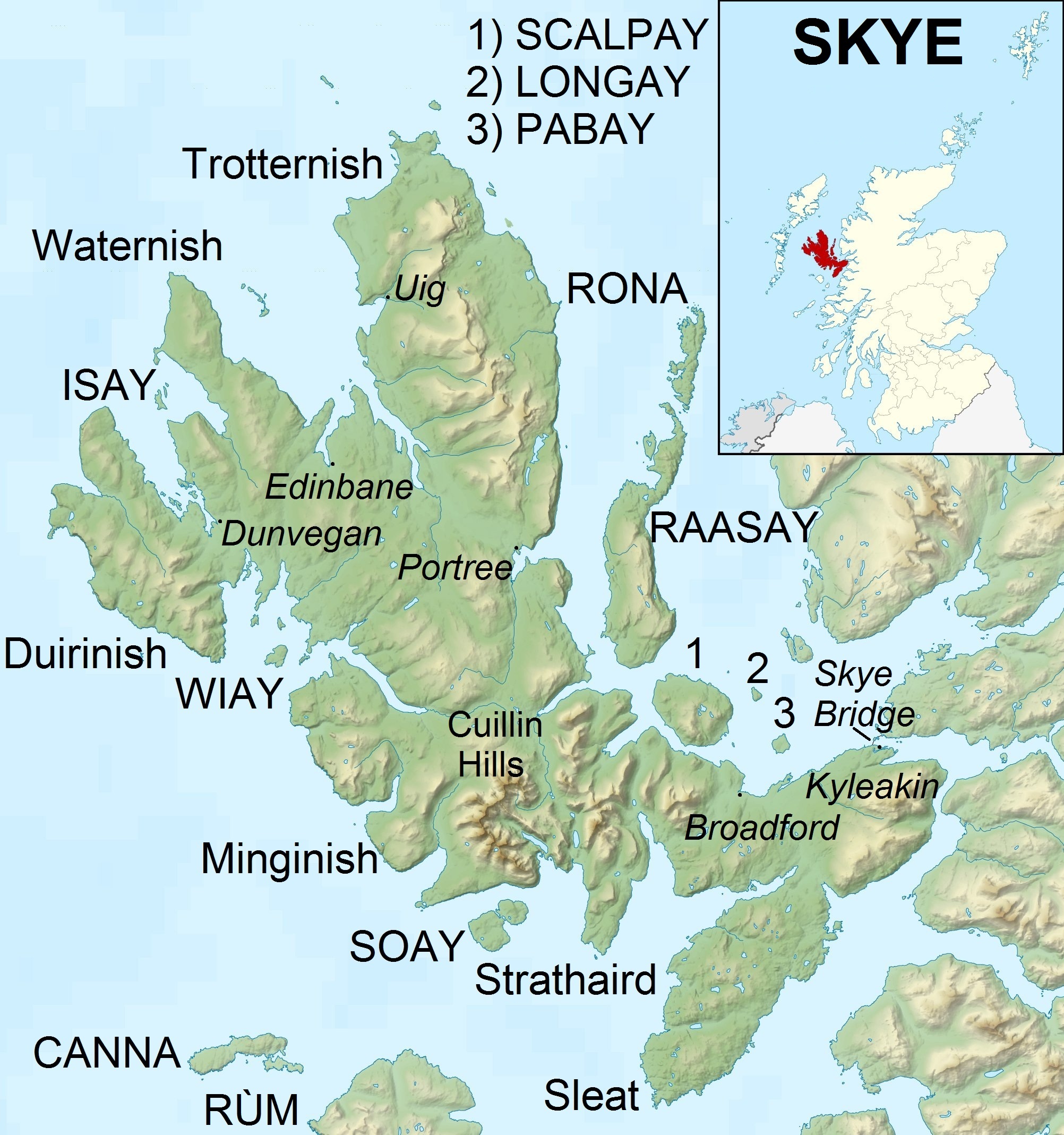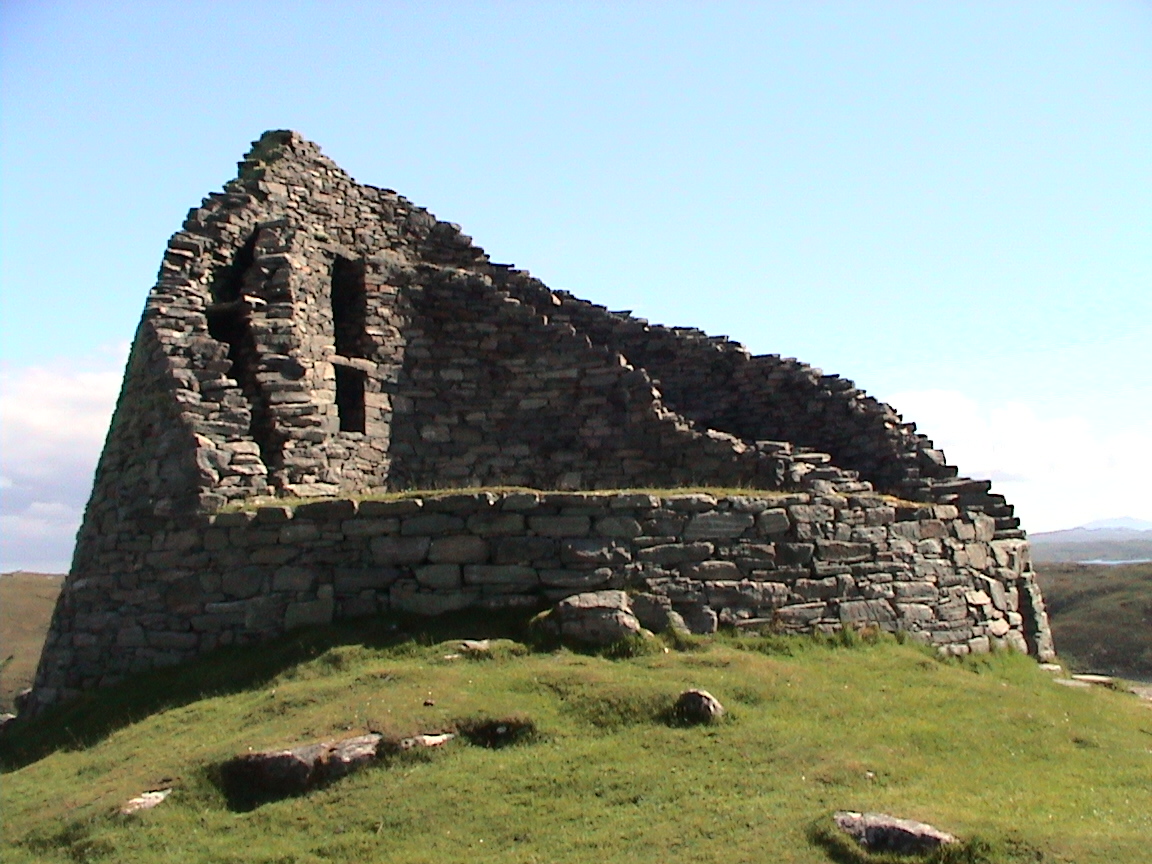|
Bornesketaig
Bornesketaig, Scottish Gaelic Borgh na Sgiotaig, is a dispersed crofting settlement in Trotternish on the Isle of Skye. Broch A broch once stood nearby, but little remains as the stones have been robbed for other uses. There are a number of caves in the cliffs around Bornesketaig. Gallery File:Beaton's Croft House - geograph.org.uk - 740315.jpg, Beaton's Croft, 40 Bornesketaig, is a Category A listed This is a list of Category A listed buildings in Scotland, which are among the listed buildings of the United Kingdom. For a fuller list, see the pages linked on List of listed buildings in Scotland. Key The organization of the lists in th ... building File:Camas Mor, Bornesketaig.jpg, The beach of Camas Mor with some of the houses in Bornesketaig References Populated places in the Isle of Skye {{Highland-geo-stub ... [...More Info...] [...Related Items...] OR: [Wikipedia] [Google] [Baidu] |
Beaton's Cottage
Beaton's Cottage (also known as Beaton's Croft) is a croft dwelling in Bornesketaig, Isle of Skye, Scotland, near the island's northern tip. A Category A listed, it was built around 1880 – and is in "quite excellent condition".40 Bornesketaig – Historic Environment Scotland It is a single-storey construction, three bays with ... [...More Info...] [...Related Items...] OR: [Wikipedia] [Google] [Baidu] |
Trotternish
Trotternish or Tròndairnis (Scottish Gaelic) is the northernmost peninsula of the Isle of Skye, in Scotland. Its most northerly point, Rubha Hùinis, is the most northerly point of Skye. One of the peninsula's better-known features is the Trotternish landslip, a massive landslide that runs almost the full length of the peninsula, some .Ordnance Survey ''Landranger'' 1:50000 Map. Sheet 23. North Skye, Dunvegan & Portree. The landslip contains two of Skye's most famous landmarks: the Old Man of Storr, an isolated rocky pinnacle, and the Quiraing, an area of dramatic and unusual rock formations. The summit of The Storr, on whose slopes the Old Man of Storr is located, is the highest point of the peninsula. The north-eastern part of the peninsula around Quiraing is designated as a National Scenic Area and the entire landslip is a Special Area of Conservation. Dinosaur footprints have been found at ''An Corran'', which is also a Mesolithic hunter-gatherer site dating to the 7 ... [...More Info...] [...Related Items...] OR: [Wikipedia] [Google] [Baidu] |
Highland (council Area)
Highland ( gd, A' Ghàidhealtachd, ; sco, Hieland) is a council area in the Scottish Highlands and is the largest local government area in the United Kingdom. It was the 7th most populous council area in Scotland at the 2011 census. It shares borders with the council areas of Aberdeenshire, Argyll and Bute, Moray and Perth and Kinross. Their councils, and those of Angus and Stirling, also have areas of the Scottish Highlands within their administrative boundaries. The Highland area covers most of the mainland and inner-Hebridean parts of the historic counties of Inverness-shire and Ross and Cromarty, all of Caithness, Nairnshire and Sutherland and small parts of Argyll and Moray. Despite its name, the area does not cover the entire Scottish Highlands. Name Unlike the other council areas of Scotland, the name ''Highland'' is often not used as a proper noun. The council's website only sometimes refers to the area as being ''Highland'', and other times as being ''the ... [...More Info...] [...Related Items...] OR: [Wikipedia] [Google] [Baidu] |
Scottish Gaelic
Scottish Gaelic ( gd, Gàidhlig ), also known as Scots Gaelic and Gaelic, is a Goidelic language (in the Celtic branch of the Indo-European language family) native to the Gaels of Scotland. As a Goidelic language, Scottish Gaelic, as well as both Irish and Manx, developed out of Old Irish. It became a distinct spoken language sometime in the 13th century in the Middle Irish period, although a common literary language was shared by the Gaels of both Ireland and Scotland until well into the 17th century. Most of modern Scotland was once Gaelic-speaking, as evidenced especially by Gaelic-language place names. In the 2011 census of Scotland, 57,375 people (1.1% of the Scottish population aged over 3 years old) reported being able to speak Gaelic, 1,275 fewer than in 2001. The highest percentages of Gaelic speakers were in the Outer Hebrides. Nevertheless, there is a language revival, and the number of speakers of the language under age 20 did not decrease between the 2001 ... [...More Info...] [...Related Items...] OR: [Wikipedia] [Google] [Baidu] |
Crofting
Crofting is a form of land tenure and small-scale food production particular to the Scottish Highlands, the islands of Scotland, and formerly on the Isle of Man. Within the 19th century townships, individual crofts were established on the better land, and a large area of poorer-quality hill ground was shared by all the crofters of the township for grazing of their livestock. Practice Crofting is a traditional social system in Scotland defined by small-scale food production. Crofting is characterised by its common working communities, or "townships". Individual crofts are typically established on of in-bye for better quality forage, arable and vegetable production. Each township manages poorer-quality hill ground as common grazing for cattle and sheep. Land use in the crofting counties is constrained by climate, soils, and topography. Since the late 20th century, the government has classified virtually all of the agricultural land in the Highlands and Islands as Severely Di ... [...More Info...] [...Related Items...] OR: [Wikipedia] [Google] [Baidu] |
Isle Of Skye
The Isle of Skye, or simply Skye (; gd, An t-Eilean Sgitheanach or ; sco, Isle o Skye), is the largest and northernmost of the major islands in the Inner Hebrides of Scotland. The island's peninsulas radiate from a mountainous hub dominated by the Cuillin, the rocky slopes of which provide some of the most dramatic mountain scenery in the country. Slesser (1981) p. 19. Although has been suggested to describe a winged shape, no definitive agreement exists as to the name's origins. The island has been occupied since the Mesolithic period, and over its history has been occupied at various times by Celtic tribes including the Picts and the Gaels, Scandinavian Vikings, and most notably the powerful integrated Norse-Gaels clans of MacLeod and MacDonald. The island was considered to be under Norwegian suzerainty until the 1266 Treaty of Perth, which transferred control over to Scotland. The 18th-century Jacobite risings led to the breaking-up of the clan system and later clea ... [...More Info...] [...Related Items...] OR: [Wikipedia] [Google] [Baidu] |
Broch
A broch is an Iron Age drystone hollow-walled structure found in Scotland. Brochs belong to the classification "complex Atlantic roundhouse" devised by Scottish archaeologists in the 1980s. Their origin is a matter of some controversy. Origin and definition The word ''broch'' is derived from Lowland Scots 'brough', meaning (among other things) fort. In the mid-19th century Scottish antiquaries called brochs 'burgs', after Old Norse ', with the same meaning. Place names in Scandinavian Scotland such as Burgawater and Burgan show that Old Norse ' is the older word used for these structures in the north. Brochs are often referred to as '' duns'' in the west. Antiquarians began to use the spelling ''broch'' in the 1870s. A precise definition for the word has proved elusive. Brochs are the most spectacular of a complex class of roundhouse buildings found throughout Atlantic Scotland. The Shetland Amenity Trust lists about 120 sites in Shetland as candidate brochs, while the ... [...More Info...] [...Related Items...] OR: [Wikipedia] [Google] [Baidu] |
Cave
A cave or cavern is a natural void in the ground, specifically a space large enough for a human to enter. Caves often form by the weathering of rock and often extend deep underground. The word ''cave'' can refer to smaller openings such as sea caves, rock shelters, and grottos, that extend a relatively short distance into the rock and they are called ''exogene'' caves. Caves which extend further underground than the opening is wide are called ''endogene'' caves. Speleology is the science of exploration and study of all aspects of caves and the cave environment. Visiting or exploring caves for recreation may be called ''caving'', ''potholing'', or ''spelunking''. Formation types The formation and development of caves is known as '' speleogenesis''; it can occur over the course of millions of years. Caves can range widely in size, and are formed by various geological processes. These may involve a combination of chemical processes, erosion by water, tectonic forces, microorgan ... [...More Info...] [...Related Items...] OR: [Wikipedia] [Google] [Baidu] |
Cliff
In geography and geology, a cliff is an area of rock which has a general angle defined by the vertical, or nearly vertical. Cliffs are formed by the processes of weathering and erosion, with the effect of gravity. Cliffs are common on coasts, in mountainous areas, escarpments and along rivers. Cliffs are usually composed of rock that is resistant to weathering and erosion. The sedimentary rocks that are most likely to form cliffs include sandstone, limestone, chalk, and dolomite. Igneous rocks such as granite and basalt also often form cliffs. An escarpment (or scarp) is a type of cliff formed by the movement of a geologic fault, a landslide, or sometimes by rock slides or falling rocks which change the differential erosion of the rock layers. Most cliffs have some form of scree slope at their base. In arid areas or under high cliffs, they are generally exposed jumbles of fallen rock. In areas of higher moisture, a soil slope may obscure the talus. Many cliffs als ... [...More Info...] [...Related Items...] OR: [Wikipedia] [Google] [Baidu] |
Category A Listed
This is a list of Category A listed buildings in Scotland, which are among the listed buildings of the United Kingdom. For a fuller list, see the pages linked on List of listed buildings in Scotland. Key The organization of the lists in this series is on the same basis as the statutory register. County names are those used in the register, and in the case of Scotland they parallel the current administrative areas. Category A listed buildings in Scotland See also * List of castles in Scotland * List of country houses in the United Kingdom *List of hillforts in Scotland *List of historic sites in Scotland * List of monastic houses in Scotland *List of National Trust for Scotland properties * List of post-war Category A listed buildings in Scotland * Listed buildings in England *Listed buildings in Northern Ireland * Listed buildings in Wales *Lists of listed buildings in Scotland *Signal boxes that are listed buildings in Scotland __NOTOC__ A number of signal boxes in ... [...More Info...] [...Related Items...] OR: [Wikipedia] [Google] [Baidu] |




